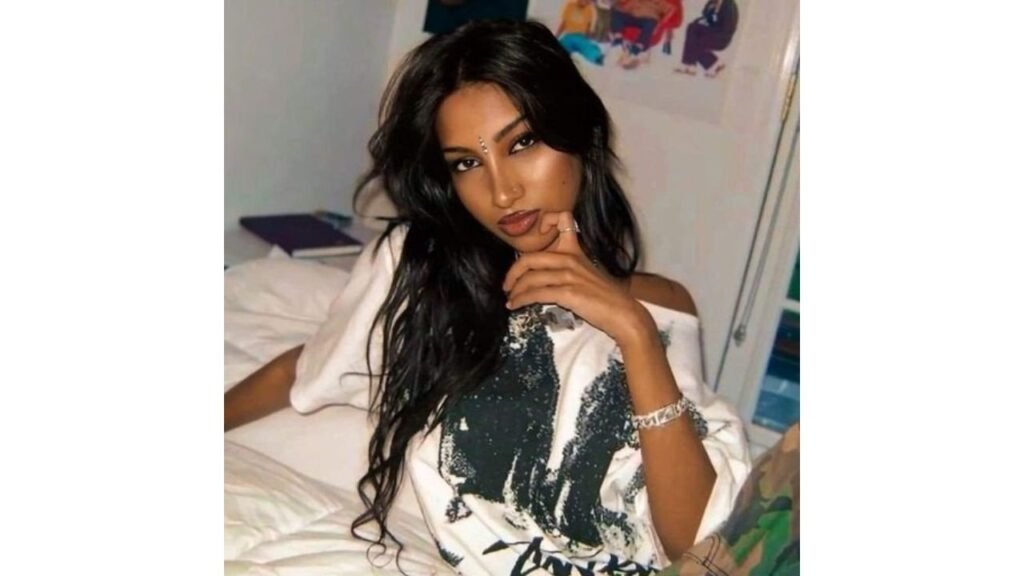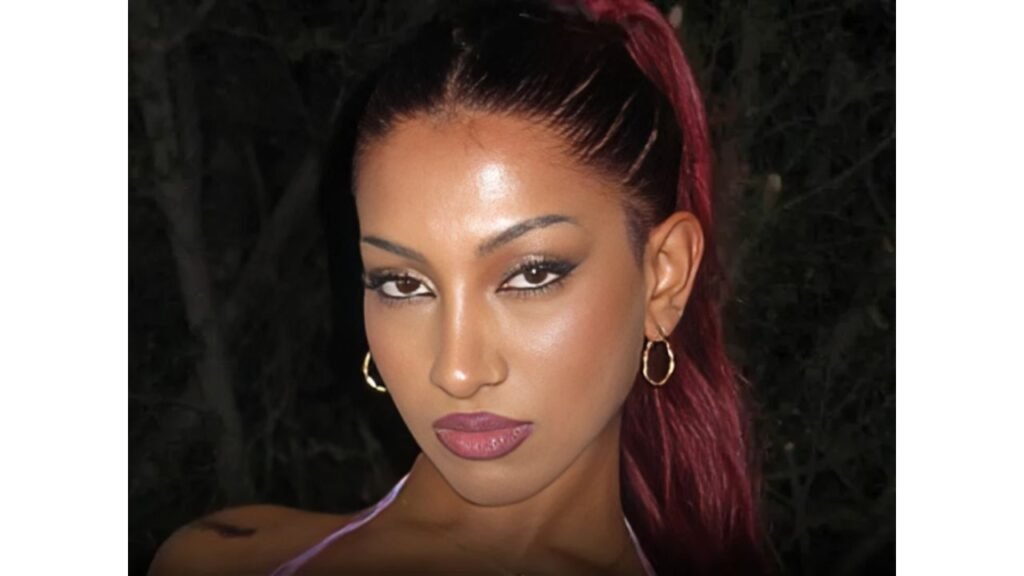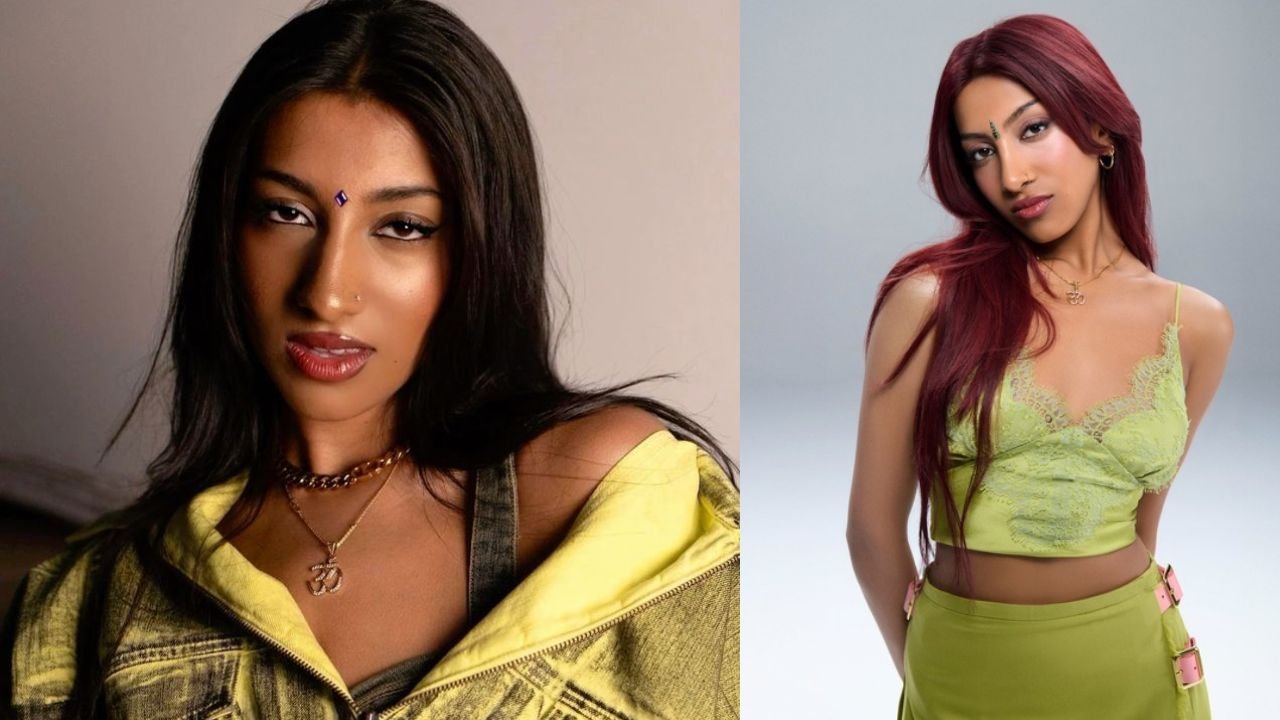When Lara Raj describes herself as spiritual, it’s easy to understand why. The gold Om pendant around her neck, her casual mentions of crystals, and the deep, emotional way she talks about music all show how connected she is to something beyond herself. At just 19, the singer and producer has found her way into Katseye, a global girl group created by HYBE and Geffen Records. But her journey hasn’t been without hardship.
Two years ago, Lara was among 20 girls going through intense training for a chance to join the new, then-unnamed group. “It all started with a DM,” she says with a smile over Zoom, wearing a black mesh tank top and a sparkling nose ring. The label had noticed her song covers online, and before she knew it, she was flying to Los Angeles.
She quickly became a top contender—until her life took a painful turn. “Two months before the final group announcement, I found out my paati (grandmother) had passed away,” she shares. Her grandmother had been her spiritual guide, always gifting her crystals and unconditional love.

Just before she passed, she gave Lara a special crystal—a Cat’s Eye. After attending the funeral in Chennai, Lara returned to training, and soon after, was chosen for the final group. The group was named Katseye. “It felt like fate,” she says. “Like everything came full circle.”
Born in Connecticut and raised in New York, Lara always felt a quiet confidence that she was meant to do something extraordinary. “Music is art for me,” she explains. With her older sister Rhea already making music, Lara began learning and creating early. By her teenage years, she was producing songs in her bedroom late into the night. “I make something every night, even if it’s messy. It keeps my creativity alive.”
Lara rose to fame through The Debut: Dream Academy, a Netflix documentary that followed the group’s journey and introduced their first EP, Soft Is Strong. Along with bandmates Manon Bannerman, Sophia Laforteza, Megan Skiendiel, Yoonchae Jeung, and Daniela Avanzini, she became part of a truly global group. Each member comes from a different background—Lara is Indian, Manon is Swiss Italian and Ghanaian, Sophia is Filipino, Megan is Chinese Singaporean, Yoonchae is Korean, and Daniela is Venezuelan Cuban. What makes Katseye unique is that they highlight their differences instead of hiding them. “I’m proud of my culture,” Lara says proudly, with her bindi, nose ring, and eyeliner all part of her expression.

Soft Is Strong introduced Katseye to the world, but their new EP, Beautiful Chaos, shows a whole new side. The lead single “Gnarly” is full of energy, sarcasm, and a bassline that makes you want to move. The dance moves? Wild. “We were screaming when we first heard it—and confused too!” Lara laughs.
Fans were also surprised by the sudden change from the group’s soft image to a bold, party-girl vibe. The members knew it would shock people. “We even joked in our group chat, pretending to post hate comments,” Lara says, laughing. Their friendship is strong.
Instead of fighting, like some former girl groups, Katseye supports each other. When asked about their connection, Lara lights up. “We have our own secret language. We’re in every part of each other’s lives. I always wanted a big girl friend group—and now I have it.”
This close bond helped Lara through a big personal moment. During a live Weverse broadcast, she casually came out, referring to herself as “half-fruitcake.” She didn’t expect it to become a headline, but in the traditional world of K-pop, it made global news. “I didn’t think it was a big deal. I’ve been out since I was 14. Everyone who mattered already knew,” she says. But fans responded in a huge way. “That morning, I woke up to hundreds of DMs saying, ‘You helped me come out too.’”
On tour, Lara has felt even more connected to fans—who proudly call themselves “Eyekons.” One moment that stayed with her happened in Dallas. “Someone held up a sign that said ‘Brown girls for Katseye,’” she says, her voice full of emotion. “I started crying. I couldn’t believe it was real.”
As someone who once struggled to balance her Indian-American identity, that moment meant everything. “For so long, I pushed my roots away because it felt too hard. That sign reminded me how important they are.”
Now, she’s inspired by fellow South Asian women breaking barriers in entertainment. “People like Maitreyi Ramakrishnan, Avantika Vandanapu, and Misha Sattar are opening doors I never thought would open. I want our culture to be seen—not just accepted, but celebrated.”





